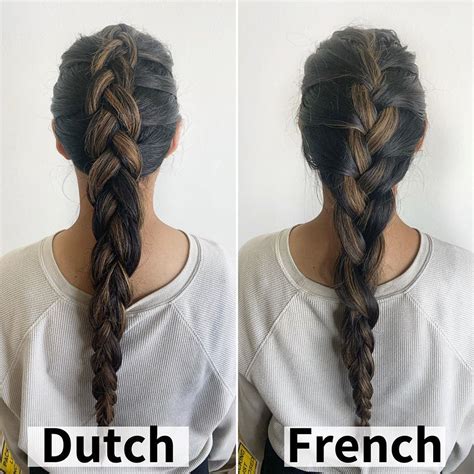1. Introduction
When it comes to braids, two iconic styles reign supreme: Dutch braids and French braids. Both exude effortless elegance and versatility, but they differ in their appearance and construction. This comprehensive guide will delving into the intricacies of each style, exploring their unique characteristics, benefits, and the reasons why they matter.

Dutch Braids
Dutch braids, also known as inverted braids, are characterized by their raised appearance. The strands are interwoven underneath, creating a 3D effect. They are often used to add volume and texture to hair, making them ideal for both casual and formal occasions.
French Braids
French braids, on the other hand, are woven by crossing the strands over each other. They create a flat, elegant appearance and are known for their intricate designs. French braids are a timeless classic, suitable for a wide range of hair types and styles.
2. Key Differences: Appearance, Technique, and Suitability
2.1. Appearance
Dutch Braids: Raised, 3D effect, adds volume and texture
French Braids: Flat, elegant appearance, intricate designs
2.2. Technique
Dutch Braids: Strands interwoven underneath
French Braids: Strands crossed over each other
2.3. Suitability
Dutch Braids: Best for adding volume to fine hair, creating messy buns, and updos
French Braids: Suitable for all hair types, ideal for classic and elegant looks
3. Why Dutch Braids and French Braids Matter: Benefits and Applications
3.1. Benefits
Dutch Braids:
– Add volume and texture to hair
– Can create messy buns and updos
– Less likely to get tangled
– Can hold hair back securely
French Braids:
– Achieve a polished and elegant look
– Versatile, suitable for various hair types and styles
– Can protect hair from damage
3.2. Applications
Dutch Braids:
– Casual and formal updos
– Messy buns and top knots
– Cornrows and other protective hairstyles
French Braids:
– Bridal hairstyles and special occasions
– Elegant buns and ponytails
– Fishtail braids and intricate designs
4. Common Mistakes to Avoid
Dutch Braids:
– Braiding too tightly, causing discomfort
– Over-braiding, leading to hair breakage
– Not securing the end of the braid properly
French Braids:
– Starting with uneven sections, resulting in an uneven braid
– Braiding too loosely, making the braid fall apart
– Not pulling the hair taut enough when crossing the strands
5. Conclusion
Whether you choose Dutch braids or French braids, these classic styles offer a plethora of benefits and applications. Understanding their unique characteristics and techniques will empower you to create stunning hairstyles that enhance your natural beauty. Embrace the versatility of braids and experiment with different designs to elevate your hair game to the next level.
